Application of brilliant green for cucumbers
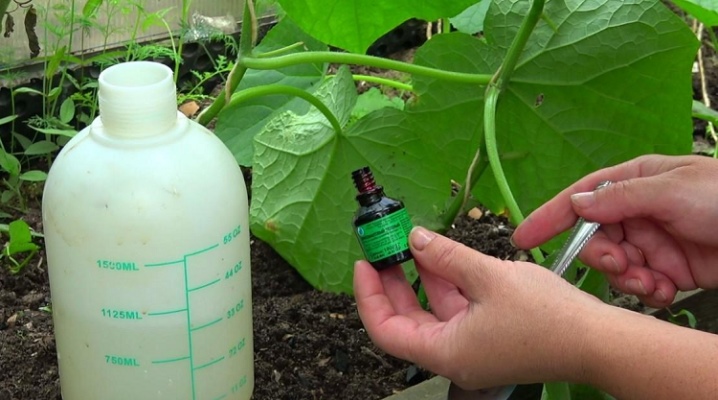
It is possible to successfully grow cucumbers even without the presence of a large number of purchased fungicides and insecticides - the usual one can become a worthy alternative. brilliant green... Despite the seeming harmlessness of the drug, it should still be used with care.
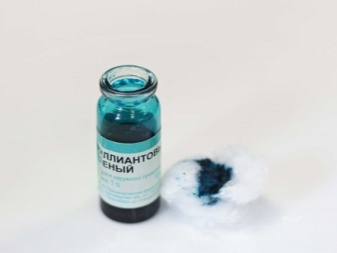

How does it work?
Zelenka is widely known as an antiseptic necessary for the treatment of wounds, scratches and other injuries on human skin. However, its application is also possible in the case of growing various kinds of crops, mainly cucumbers. The benefits of the drug are invaluable: brilliant green promotes rapid healing of cracks on shoots or scratches on leaf blades, and also very effectively fights against fungal spores and bacteria.
For example, green liquid can significantly reduce the symptoms of late blight, root rot, powdery mildew, yeast and other diseases. Due to the presence of copper in the composition, brilliant green is also useful for strengthening the immunity of a vegetable crop and its root system. As a result of timely procedures, strong, spreading lashes form in cucumbers, on which fruits of a more saturated green hue subsequently appear abundantly.
Moreover, copper in the composition has a positive effect on the process of photosynthesis, contributing to the accumulation of chlorophyll. The special properties of the emerald solution include the ability to resist common pests.... The tool can be used both in the open field and in the greenhouse, subjecting both seedlings and adult specimens to processing. By the way, if you process vegetable seedlings with brilliant greens, you can significantly increase the survival rate: up to 87% in the open field and almost 93% in a greenhouse.
By the way, the accumulation of copper in the soil has a particularly good effect on the condition of depleted areas located in swampy areas.

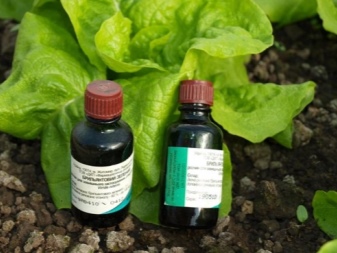
The lack of this element is evidenced by many signs. So, you should think about using an antiseptic if the cucumber whips do not grow, and the upper shoots wither and die off. It does not hurt to feed the plant with brilliant green in case of violation of the development of the root system, as well as a change in the shade and shape of the leaf blades. Zelenka is a low-cost, widespread, but at the same time effective alternative to many chemicals. During the application of the solution, do not be afraid that drops will fall on the leaf blades - these splashes will not only not harm, but also benefit the culture. Again, a person can work with emerald grout without special protection.
Nevertheless, a number of shortcomings in brilliant green are still found. For example, the desired result appears only with regular procedures. In addition, if an overdose of the agent is found in the working solution, then the leaf blades can become covered with chemical burns, which, in turn, contribute to the rapid death of cucumber plantings.
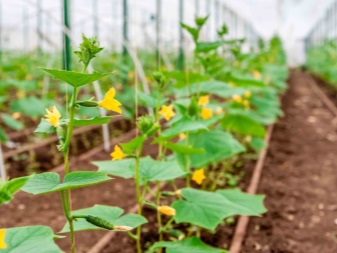
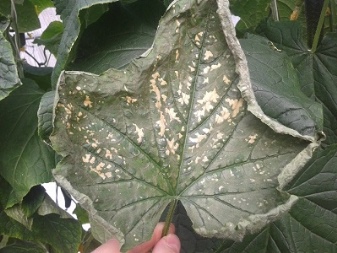
How to cook?
In principle, the recipe for preparing a solution of herbs for processing cucumbers is quite versatile. I must say that it requires the mandatory observance of proportions, since excessive concentration can harm the culture. The number of drops that need to be diluted in clean, settled water is determined depending on the condition of the cucumbers.For example, if the culture is at the initial stage of the disease, then only 5 milliliters of the drug have to be used per liter of water. With an advanced stage of the disease, you will need to dilute the brilliant green in the ratio of 10 milliliters of pharmacy product per liter of water.
If the culture requires preventive treatment for fungal diseases, then 5 to 10 drops will need to be added to the bucket of water. A strong solution, obtained by diluting 30-40 drops in a liter of water, is suitable for the destruction of slugs, caterpillars and pests in the aisles. It is customary to fertilize cucumbers with a weak solution of herbs, during the preparation of which only 1 drop of a copper-containing preparation is used for each liter of water. There is also the possibility of creating a remedy based on rotted hay. In this case, the auxiliary ingredient is poured with water and removed to a warm place for about a week. After the above period, everything is filtered, after which each liter of tincture is enriched with 1 milliliter of brilliant green.
It should be mentioned that it is correct to spray and feed only with fresh solutions, since folk remedies quickly lose their beneficial properties. This means that you should only prepare the amount that is enough for one time. If necessary, homemade fertilizer can still be stored, but only for one day and in a cool place.
If the night turns out to be warm, then the liquid will have to be destroyed the next day.

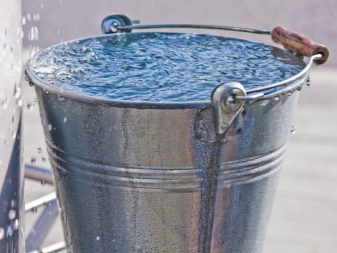
How to use for feeding?
The use of emerald solution for processing cucumber plantings can be carried out in different ways.
Spraying
Spraying is the main way to use greens in cucumber beds outdoors or in a greenhouse. At the same time, she copes with both prevention and nutrition, but in the first question she still manifests herself much more efficiently. It is most convenient to carry out the procedure using a special spray gun or a hand sprayer. The first treatment, more preventive, is carried out before or during the opening of the flower buds, and the last one after harvest. It is allowed to use the drug in this way once a week. If an excess solution remains after the procedure, then it is allowed to pour it onto neighboring beds - cabbage or tomato.
It is better to use foliar dressing either in the early morning or late in the evening. A cloudy but not rainy day is considered excellent for the procedure. We must never forget that drops on leaves or shoots, "highlighted" by the bright sun, turn into burns. Many gardeners recommend that you first water the plant with plain water, and then start spraying.
Seedlings will most of all like a mixture of 30 drops of a pharmaceutical preparation, 20 grams of shavings of laundry soap and a bucket of water, but for an adult plant, basic 5-10 drops per 10 liters of base will be enough for an adult plant.
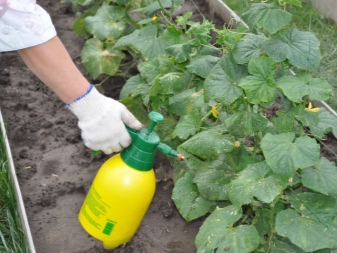

Watering
If brilliant green is purchased as a fertilizer, then it can simply be poured into the water intended for irrigating the crop. In principle, it is also possible to mix the liquid with a solution of some foliar fertilizers. During irrigation, the liquid should always be directed under the root without touching the root collar. The first time to feed the soil should be even before the buds begin to form. A good solution would be to supplement the brilliant green with another component - dark or gray bread.
First of all, the loaf is soaked in a bucket of water and left for about half a day until it is completely softened. Next, the liquid will need to be filtered, squeezed, stirred and enriched with a couple of drops of emerald-colored medicine. If, after fertilizing the beds, they can be loosened, then the solution is allowed not to filter. In this case, the soggy bread will be evenly embedded in the soil, which will allow it to better enrich the soil.It is enough to irrigate flowering cucumbers with 3-4 drops of brilliant green, diluted with a bucket of settled warm water. The beds must be pre-moistened. If the culture grows in a greenhouse, then a nutritional and prophylactic mixture of a liter of whey, 1 drop of brilliant green and 24 drops of potassium iodide is more suitable for it. A similar mix is allowed every two weeks.

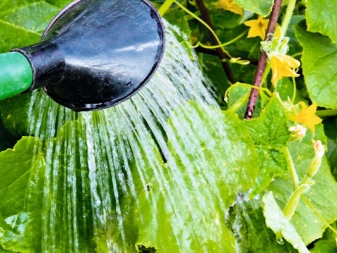
How to apply against diseases and pests?
With the help of brilliant green, cucumbers can be quite effectively treated for root and root rot, the primary symptoms of which are yellowing and wilting of foliage. To do this, a teaspoon of the pharmaceutical preparation needs to be supplemented with 2 teaspoons of water, after which the resulting mixture should be treated with the damaged areas of the plant stem. Using a folk recipe will be easier if you use a brush. As a rule, the disappearance of the fungus is observed after a couple of procedures, but they can be repeated up to several times a week.
Another method of treating rot involves smearing the stem with brilliant green, accompanied by spraying with an iodine-containing solution. It will be more convenient to first combine brilliant green and iodine in a ratio of 2 to 1, and then dilute the components with 10 liters of settled water. It is important that at least 10-15 centimeters of the stem from ground level to the leaf plates are covered.
If the cucumber leaves began to become covered with growing spots of yellow color, then we are most likely talking about powdery mildew. On the damaged areas of the seedling, you will need to spray it weekly with a mixture of half a teaspoon of herbs, a teaspoon of ammonia and a liter of water. A mix of 8 liters of water, 2 liters of milk and 5 milliliters of brilliant greens will also cope with the disease. Plants will need to be sprayed with this drug every 5 days until the disease completely recedes.

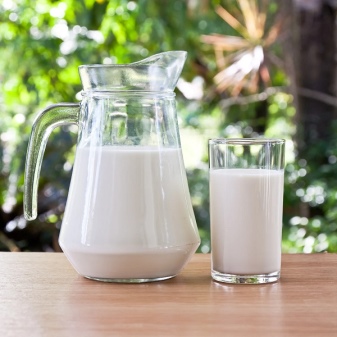
Downy mildew requires more serious intervention, and therefore the treatment is carried out with the preparation of a mixture of 1 milliliter of brilliant green, 1 liter of water, 25 grams of urea and 0.5 liters of whey. The procedure can be carried out three times per season: at the stage of ovary emergence, shortly before and after flowering. The fight against late blight is carried out by spraying. The remedy is obtained from 15 drops of herbs, 5 drops of iodine and 10 liters of water, or antiseptics, taken in the amount of 20 drops and diluted in the same bucket. Treatment is carried out in the evenings once every 10 days, and three procedures are usually enough to eliminate the disease. A solution prepared in the same way eliminates gray rot, but white rot requires a more concentrated liquid from 40 drops of antiseptic and 10 liters of base.
It must be said that in a greenhouse characterized by high air humidity, it is especially important to prevent root rot. Processing is allowed only in the early morning, since at night the temperature in the room decreases, humidity, on the contrary, rises, and condensation is actively formed. If you use the drugs in the evening, then, on the contrary, it contributes to the development of the fungus. To use the drug against pests is most effective as a prophylaxis.
For example, before planting, the seed is necessarily disinfected by soaking for 3 days in a solution of a liter of clean water and a couple of drops of brilliant green. Further, the seedlings should be regularly sprayed with serum, and after the end of the season, it is customary to disinfect the soil with a mixture of 5 drops of an antiseptic and 10 liters of a liquid base.
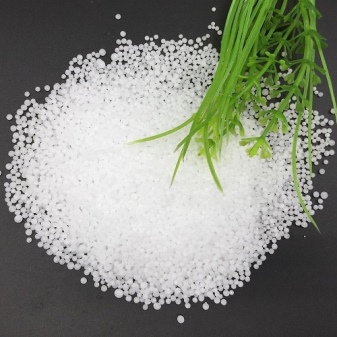
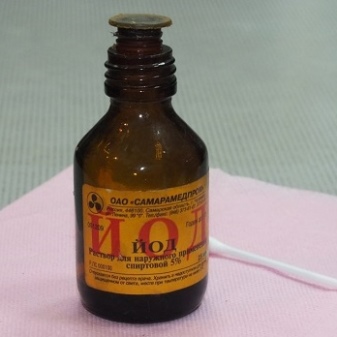













The comment was sent successfully.